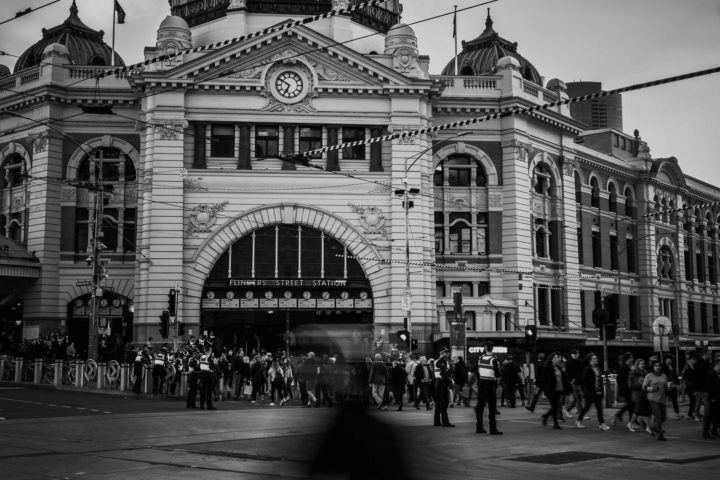Despite the incredible growth of online retail over the last few years, the overwhelming majority of sales still take place in physical stores.
As we can see from the latest ABS retail data, online sales as a proportion of total retail turnover in Australia enjoyed a slow but steady growth over the last decade. Then a certain global pandemic came along and changed everything:
At the height of the first wave of COVID lockdowns, across the retail sector as a whole, online sales still only accounted for around 1 in every ten sales. The other 9 were still taking place in stores.
And while the long 2021 lockdowns in NSW and Victoria saw online sales reach new highs at over 15% of total retail turnover, you can also clearly see from this data the pattern of what happens when lockdowns end. While in-store sales haven't returned to pre-pandemic levels of around 6-7%, there is a noticeable immediate drop back from online to offline sales whenever lockdowns lift. Aussies sure do love shopping in stores, when they are allowed to.
As Australia's roadmap out of the pandemic brings the latest lockdowns to an end just in time for the busy 2021 holiday season, we can expect a strong boost to physical retail in the coming months.
And yet, when it comes to reliable customer data that retailers can use to make decisions about strategy, understand store performance and conversion rates, plan staffing rosters, measure marketing initiatives, and all the other things that go into running a successful store network, many retailers don't have anything like the same data to support their physical stores as they do for digital.
1. You Wouldn't Run A Website without Analytics
You wouldn't dream of running a website without analytics. Partly, that's because adding comprehensive tracking to a website is relatively straightforward and low cost. Implementing Google Analytics, for example, can be as simple as including a snippet of code on every page of the site. This will give you a whole range of datapoints you can use to inform your decision making, almost immediately.
That means you can track shopper behaviour across the online store, and understand key metrics such as reach, engagement, and click through rates. And you can carry out A/B testing of different site layouts and messaging (where you show different versions of a page to specific users and monitor the outcomes to find out definitively what works best). You can also begin to implement automated actions that will directly impact your conversion rates, such as automatically retargeting any potential customers who abandoned their cart without checking out.
Of course, getting footfall traffic analytics working for physical retail clearly involves more effort (and higher initial implementation costs), but it doesn't make a lot of sense to have such extensive data for the digital side of your business and almost nothing about what is happening in the bricks and mortar retail stores where the majority of your sales take place.
2. You've Already Invested To Get Them In Store
Think about all the costs that go into getting someone through the doors and into your store. From marketing and advertising spend through to the actual costs of running the store itself: rent, store fitout, staffing costs and much more. It all adds up to a significant investment.
So you'd be crazy not to monitor the effectiveness of that spend. In fact, given the costs involved, and the potential bottom line impact of anything that can lift sales performance in the store, really the physical store is where you should be focussing the majority of your data analytics resources.
As we've written in previous blogs, your sales data is one metric you might use, but it doesn't ever tell you the whole story. Sales data can't tell you about conversion rates or the potential sales you missed out on. That's especially true as the retail sector recovers from a period of disruption like no other. Comparing sales figures this year with the equivalent figures from last year is going to be highly misleading: you can't hope to understand your sales performance without knowing more about your in-store footfall.
A retail analytics platform that can collect footfall traffic analytics data on customer activity in the store is an essential investment for any modern retailer.
3. Your Competitors Are (Likely) Already Doing It
As in-store retail analytics technology develops, you can be sure that competitors who understand the inherent advantages of a data-driven approach are either already implementing solutions or are actively looking into collecting and analysing data on in-store activity.
There's also examples of pureplay online retailers making the move into physical retail. Take Amazon, for example, who have been developing the Amazon Fresh concept over the last few years. This is a store without checkouts where a network of cameras and sensors monitors everything that happens in the store and automatically charges customers for whatever they take, with the customers simply walking out at the end of their shopping trip.
You can be sure that the company that built much of its success on algorithmic optimisation of the shopping experience is collecting (and acting on) a wealth of data on customer activity inside those stores. And while implementing footfall traffic analytics doesn't have to go to quite the "store of the future" extreme as the Amazon Fresh concept, can you afford to be left behind as the retail data arms race hots up?
4. That In-Store Shopper Is Worth More To You Than The Website Visitor
There are many reasons why a potential customer might have ended up on your website, not all of which mean that visit is likely to turn into a sale. They might just be doing product research or comparing prices, for example.
In relative terms, the barriers to entry for someone to visit a website are much lower than actually going to a store, and the commitment that someone walking through the doors of your physical store has already made is much higher. That in-store visitor is therefore much more likely to convert to a sale, if you have the right processes in place. To ensure that you can make that happen you need to understand who is visiting the store, at what times, and what they do, and for that you need in-store retail analytics.
Bridge the Great Data Divide
WingArc Retail Analytics levels the playing field between online retail and offline, bringing detailed customer data to the physical store.



